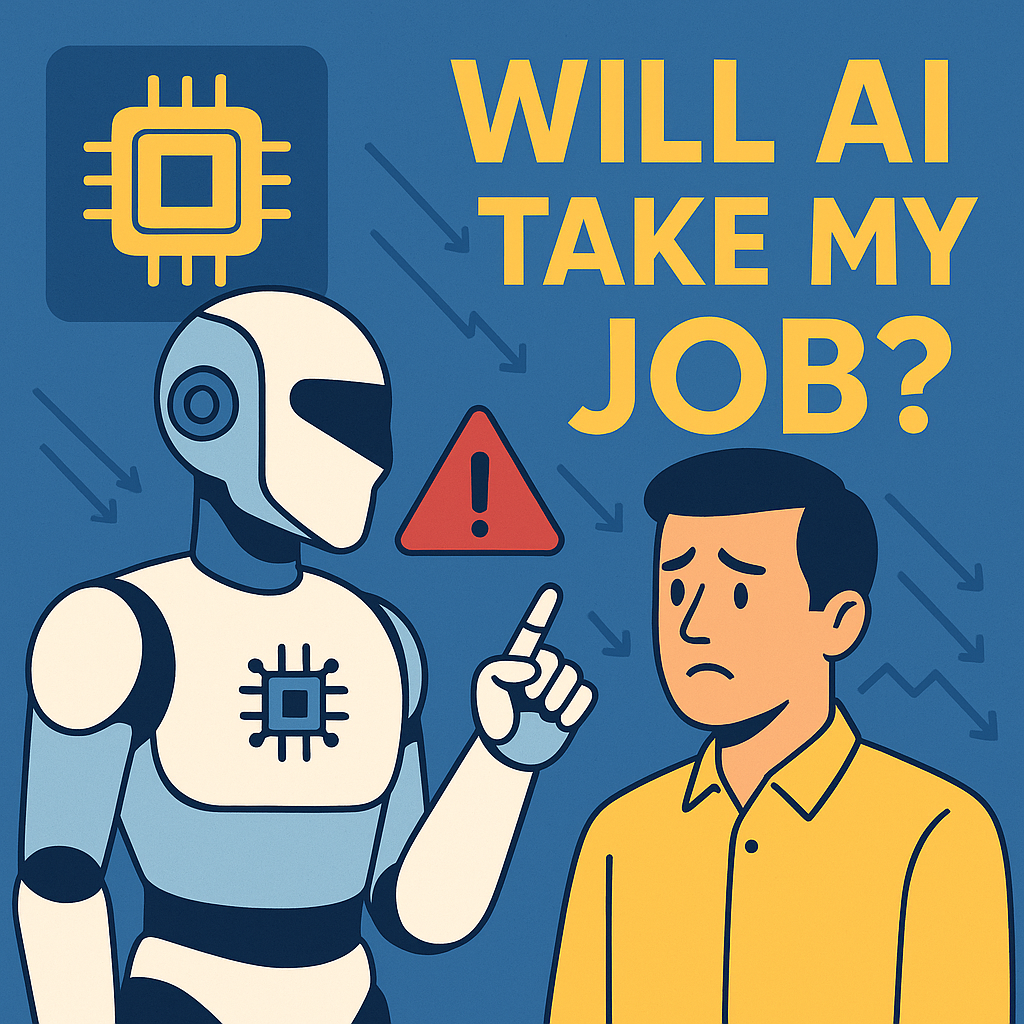Will AI Take My Job? A Practical 2025 Guide
Career Clarity Quiz • Last updated: Sep 26, 2025
Worried AI will take your job? Don’t freeze—rebalance. Audit your exposure, double down on human edges, and start a plan that compounds. WisGrowth is your clarity companion—practical, honest, action-first.
What to do next
- Audit automation risk: list top tasks; tag repeatable vs. relational/strategic.
- Pick one skill to deepen (go narrower and deeper—T-shape).
- Ship a small demo that shows human + AI working together.
- Turn meetings and docs into artifacts—evidence you can share.
- Run a 6-week learning block and review progress weekly.
💡 Try this next week: Rewrite one resume bullet with an action verb + measurable outcome.
Why we exist: careers shouldn’t be a guessing game. We give you clarity, honest feedback, and a path you can actually follow.

Ignorance creates risk. Clarity reduces it. Let’s get you a plan you can use today.
What Actually Changes With AI at Work
Roles get unbundled into tasks. The repetitive parts automate; the ambiguous parts grow. The winners learn to orchestrate AI toward outcomes—quality, speed, originality—instead of competing on raw output.
- Higher exposure: rules-based operations, templated support, basic report writing
- Lower exposure: discovery, strategy, facilitation, conflict resolution, ethical decisions
See related: The AI Storm: Why It’s Time to Create Your Own Path
Jobs AI Struggles to Replace (Your Human Moat)
Work that blends empathy, ambiguity, creativity, and accountability is harder to automate:
- Therapists, coaches, social workers
- Product managers, researchers, facilitators
- Brand and content strategists, creative leads
- Operations and enablement leaders aligning people, process, and risk
How “Human” Is Your Job? A 4-Factor Exposure Check
Score your day from 1–5 on each dimension. If your total is 12+, exposure is likely manageable.
- Ambiguity: unclear problems, changing constraints
- Empathy: emotions, motivation, context-reading
- Accountability: owning trade-offs and outcomes
- Creativity: novel ideas, narrative, experience design
Not there yet? That’s what augmentation is for.
Choose Your Path: Augment • Reframe • Reinvent
- Augment (same seat, more leverage): Learn a few AI tools, automate repetitive work, and measure impact.
- Reframe (adjacent seat): Shift toward higher-ambiguity, higher-ownership work—for example, support → CX research.
- Reinvent (new seat): Move into a role that fits your energy—guided by reflection, not panic.
Explore options: Best Careers to Watch in 2025
Your 14-Day AI-Proofing Plan
- Day 1–2: List 10 tasks; tag repetitive vs. judgment-based.
- Day 3: Run the 4-factor check on each task (ambiguity, empathy, accountability, creativity).
- Day 4–6: Choose a track and identify one small artifact you can ship.
- Day 7–10: Build the proof-of-work (case study, teardown, plan). Note where AI helped.
- Day 11–12: Refresh 5 resume bullets to outcome + AI leverage. Run an ATS check.
- Day 13–14: Have 3 warm conversations and send 5 tailored applications with your artifact.
Need a nudge? Start with the WisGrowth discovery questions.
Design better questions, hold context, tell the story, own the trade-offs—and use AI to raise the bar you’re accountable for.
Skills That Compound With AI
- Orchestration: prompt → critique → iterate → decision
- Communication: narrative, visuals, stakeholder maps
- Discovery: interviews, synthesis, opportunity sizing
- Ethics and risk: bias checks, escalation rules, consent
Sharpen the story, not just the tool list. Related: What Is an ATS Score and Why We Do It Differently
Real People. Real Shifts.
Aditi moved from BPO support to training founders after mapping her energy and shipping a short workshop deck. Raj shifted into product ops by presenting a process teardown with AI-assisted metrics. Small artifacts, big doors.
Start Your AI-Proof Journey